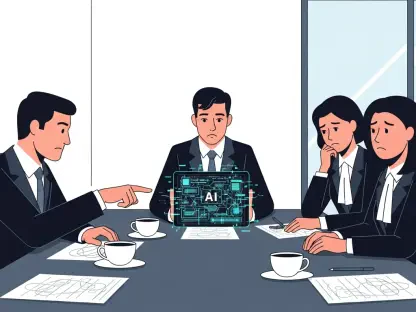Imagine a bustling city street where law enforcement can identify a wanted criminal in mere seconds, preventing a potential crime before it even happens, thanks to the power of technology. This scenario is becoming a reality with the advent of Live Facial Recognition (LFR) technology, a cutting-edge tool that is transforming public safety measures across regions like West Yorkshire in the United Kingdom. Deployed through specialized vans, LFR scans faces in real-time, matching them against watchlists of persons of interest to assist police in locating suspects, finding missing individuals, and protecting vulnerable communities. Far from being a distant concept, this technology is actively reshaping modern policing by offering rapid identification capabilities. Yet, it also raises critical questions about privacy and ethical use, necessitating a delicate balance between security and civil liberties. This article delves into how LFR bolsters public safety while addressing the safeguards in place to ensure its responsible application.
Transforming Policing with Real-Time Identification
The introduction of Live Facial Recognition technology by forces such as West Yorkshire Police marks a significant leap forward in the realm of law enforcement efficiency. Deployed via mobile vans in strategically selected locations, LFR operates by scanning faces in crowded areas and cross-referencing them with a curated database of individuals wanted for various offenses or deemed a risk to public safety. When a match is detected, an alert prompts officers to take appropriate action, whether it’s apprehending a suspect or assisting someone in need. This real-time capability drastically reduces the time spent on manual identification processes, allowing police to focus on critical tasks. Beyond apprehending criminals, the technology plays a vital role in locating missing persons and supporting victims of severe crimes like modern slavery, thereby enhancing the protective reach of law enforcement in communities where immediate response is often paramount to safety.
Moreover, the operational benefits of LFR extend to solving complex cases that would otherwise demand extensive manpower and hours of investigation. For instance, identifying perpetrators of violent crimes, stalking, or domestic abuse becomes more feasible when officers can rely on instant facial matches rather than sifting through endless footage or witness accounts. Local authorities, including West Yorkshire’s Deputy Mayor for Policing and Crime, have highlighted that tasks taking hours can now be completed in minutes, freeing up resources for broader crime prevention strategies. This efficiency is particularly impactful in initiatives aimed at reducing violence against women and girls, with ambitious goals to halve such incidents over the coming decade. By streamlining identification, LFR not only aids in immediate threat mitigation but also supports long-term societal safety objectives, proving itself as an indispensable asset in the modern policing toolkit.
Balancing Safety with Ethical Responsibility
While the advantages of Live Facial Recognition are evident, its deployment comes with a pressing need to address privacy concerns and protect civil liberties. To mitigate risks of misuse, the technology is designed with built-in safeguards, such as the immediate deletion of data from individuals who do not match the watchlist. This ensures that LFR does not evolve into a tool for mass surveillance, focusing solely on pre-authorized targets rather than indiscriminately monitoring the public. In regions like West Yorkshire, clear signage accompanies the use of LFR vans to inform citizens of its presence, fostering transparency. Additionally, strict oversight mechanisms and compliance with data protection and human rights laws are enforced to maintain accountability. Such measures are crucial in reassuring communities that the technology serves a protective purpose without overstepping personal boundaries or eroding trust in law enforcement.
Equally important is the commitment to community engagement and independent scrutiny that accompanies LFR’s implementation. Police forces have collaborated with legal and ethical experts to ensure adherence to relevant legislation, while also inviting public feedback to shape future use of the technology. Regular reviews by independent bodies further guarantee that LFR remains a responsible tool rather than an intrusive one. This dialogue with the public is essential, as it acknowledges the valid concerns surrounding privacy and the potential for bias or error in facial recognition systems. By prioritizing proportionality and transparency, authorities aim to build a foundation of trust, ensuring that the technology is perceived as a means to enhance safety rather than a threat to individual freedoms. This balanced approach underscores the importance of integrating community input into the evolution of policing tools like LFR.
Reflecting on a Safer Path Forward
Looking back, the rollout of Live Facial Recognition in areas such as West Yorkshire demonstrated a pivotal shift in how technology could fortify public safety while navigating complex ethical landscapes. The success of this initiative hinged on its ability to swiftly identify threats and support vulnerable populations, all while adhering to stringent privacy standards. As law enforcement agencies reflected on these early implementations, the focus shifted toward refining best practices for future deployments. Scaling LFR to other regions could amplify its impact, provided that robust oversight and community trust remained at the forefront. Moving forward, the challenge lies in leveraging advancements in artificial intelligence to enhance accuracy and minimize biases, ensuring that safety tools evolve in tandem with societal values. This journey highlighted the potential for technology to serve as a guardian of justice, paving the way for innovative solutions that prioritize both security and human dignity in equal measure.









